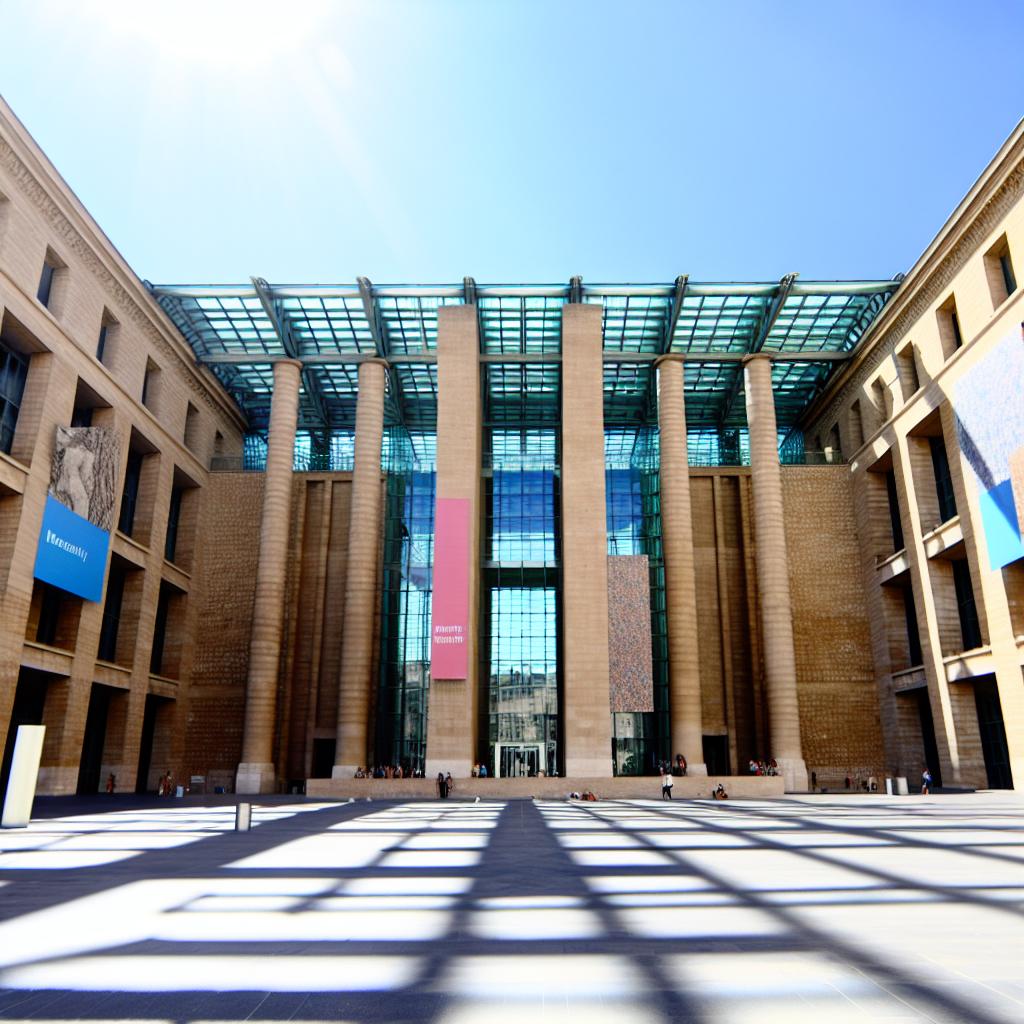The Centre Pompidou, Paris
The Centre Pompidou in Paris stands as a beacon of contemporary art in Europe. Since its opening in 1977, the museum has garnered international acclaim for its expansive collection, which includes masterpieces by artists such as Pablo Picasso, Henri Matisse, and Louise Bourgeois. Designed by the renowned architects Renzo Piano and Richard Rogers, its iconic architectural style captivates visitors as much as the art within its walls. One of the most striking features of this building is its inside-out architectural design, with structural elements like pipes and ducts visible on the exterior. This unconventional approach ensures that the Centre Pompidou remains a topic of discussion and a landmark of modern architecture. For visitors interested in current exhibitions and visiting hours, the official Centre Pompidou website provides all necessary information.
Tate Modern, London
Sitting majestically on the banks of the Thames, the Tate Modern in London is among the globe’s largest museums dedicated to modern and contemporary art. Its location in the former Bankside Power Station imbues the museum with an industrial vibe that complements its extensive range of exhibits. The building itself, with its imposing brick structure and cavernous turbine hall, is a testimony to adaptive reuse in architecture. Visitors can view works by seminal artists such as Gerhard Richter, Jenny Holzer, and Anish Kapoor. The Tate Modern is not merely a place to view art; it serves as a hub for cultural exchange and intellectual engagement. Those eager to delve deeper into its collections can explore the Tate Modern website.
Rijksmuseum, Amsterdam
While often celebrated for its classic works by masters like Rembrandt and Vermeer, the Rijksmuseum in Amsterdam holds its ground in the realm of contemporary art as well. The museum is adept at curating exhibitions that juxtapose classical art with modern sensibilities, offering an enriched artistic dialogue between eras. The Rijksmuseum’s commitment to diversity in its offerings encourages a broader appreciation of artistic evolution. Prospective visitors keen to learn more about future exhibits and the contemporary collection are encouraged to visit the Rijksmuseum website.
Museum of Contemporary Art, Barcelona
Located in the vibrant Raval district, the Museum of Contemporary Art in Barcelona (MACBA) has cemented its position as a pivotal institution in the sphere of contemporary art. The museum is renowned for its focus on art from the latter half of the 20th century, though it frequently ventures into more recent artistic productions. MACBA is noted for hosting cutting-edge exhibitions and installations that challenge the norms and push the boundaries of contemporary expression. Its dynamic program ensures something fresh and innovative for every visit. Those looking for detailed insights about the museum’s offerings can head to the MACBA website.
Moderna Museet, Stockholm
Positioned on the scenic Skeppsholmen island, Moderna Museet in Stockholm emerges as a premier institution dedicated to contemporary art. The museum proudly presents works by both Swedish and international artists, weaving a grand narrative of global artistic dialogue. The permanent collection is enriched by rotating exhibitions, ensuring a fresh experience each time. Moderna Museet is known for creating a contemplative atmosphere where visitors can deeply engage with the art, facilitated further by its tranquil island setting. Visitors wishing to learn more about upcoming exhibitions and events can visit the Moderna Museet website.
In essence, these museums symbolize the rich tapestry of contemporary art across different European cultures. Each institution embodies a unique blend of vision, history, and artistic dialogue. Their commitment to both preserving and challenging artistic norms fosters an environment where art continues to evolve and provoke thought. Whether it is through the bold architectural statements of the Centre Pompidou or the adaptive reuse exemplified by Tate Modern, these museums are not just repositories for art but are actively shaping how contemporary art is perceived and understood. As they continue to expand their collections and cover new ground, these institutions play a critical role in the global art dialogue, ensuring that contemporary art remains vibrant and relevant. From the established masterpieces in the Rijksmuseum to the boundary-pushing exhibitions at MACBA, there’s a narrative for everyone. These museums are, indeed, cultural cornerstones in the quilt of European and global art history.

